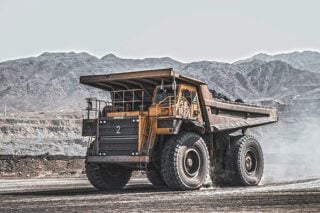Shutting down a mobile home park in Sonoma is just the beginning of a multitude of post-wildfire asbestos concerns in Northern California. The U.S. Environmental Protection Agency recently closed Journey’s End Mobile Home Park to public access, citing concerns about asbestos and other toxic chemicals that may have been released to the environment after fires passed through the area.
“A dangerous volume of asbestos was dispersed throughout the entire park,” said Santa Rosa Assistant Fire Marshal Paul Lowenthal. Only about 20 of the 160 units remain after the fires.
No one is allowed back into the park until the EPA deems the property safe. This means former residents returning to go through the ash for their belongings are not allowed to do so.
“They are going to make a plan to segregate out personal belongings that they find from the debris,” said Lowenthal. “They are prepared to take steps to preserve people’s things.”
The fires produced as much air pollution in a few days as the entire state of California’s cars produce in one year. The ash contains toxic materials like asbestos in it due to the burning of products containing the hazardous substance.
“The white ash that’s left behind that has a lot of these alkali hydroxides can be very fluffy and easily disturbed and picked up and breathed in,” said U.S. Geological Survey environmental expert Geoffrey Plumlee.
“So you want to wear a high-quality N95 dust mask and wear long sleeves, long pants, gloves, and eye protection to help minimize any possible exposures to whatever’s in the ash that might be there,” continued Plumlee.
Plumlee studied the ash left after the southern California fires of 2007. “We found quite a lot of variability depending on the age of the house, how hot it burned, and the type of construction. But we found a variety of things like arsenic, hexavalent chromium, lead, [and] there may be some asbestos,” said Plumlee.
While firefighters are the primary ones in danger from asbestos exposure due to a fire, the damage and destruction left behind can still be a hazard to others later. Staying safe from asbestos after a natural disaster, such as a wildfire, can be difficult, and it requires a lot of patience and care to clean it up properly and avoid exposure.
According to a University of California, Davis pediatrics and pulmonary medicine specialist Lisa Miller, “It’s known that wildfires can lead to short-term uptick in people seeking medical treatment, especially if they have pre-existing respiratory conditions. But the long-term effects of smoke exposure are less well understood.”
“Older houses have legacy things like asbestos and lead and some pesticides, so understanding that particularly, unfortunately, as more houses burn or buildings burn,” said Plumlee. “And then understanding what the longer-term impacts from exposures to smoke downwind [are] based on what’s known about what’s in the smoke.”
“We’re really good at using mathematical modeling strategies to come up with estimates of exposure,” said Miller. “But actually determining the amount of exposure and the type of exposure on an individual basis is really, really challenging. So I think that’s a major gap that we need to address in science.”





